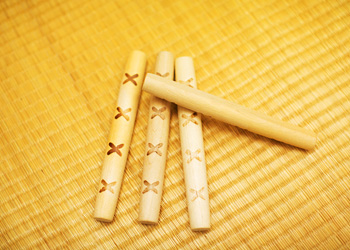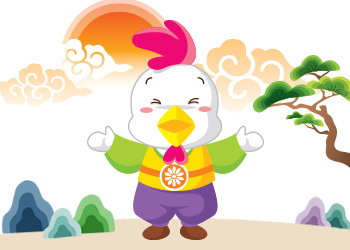Photo: Tteokguk (rice cake soup) is the first meal of the day Koreans have in celebration of a new beginning and in the hopes of longevity and good health.
Seollal (Lunar New Year; first day of the lunar calendar) is one of the most celebrated national holidays in Korea. While many observe Sinjeong (Solar New Year; January 1 of the Gregorian/Western calendar), most Koreans celebrate Seollal, which usually lasts for three days (the day of, the day before, and the day after). This year, Seollal falls on January 28 of the Gregorian calendar.
More than just a holiday to mark the beginning of a new year, Seollal is truly a special occasion for Korean people. Not only is it a time for paying respect to ancestors, but it is also an opportunity to catch up with family members. During Seollal, Koreans usually wear hanbok (traditional clothes), perform ancestral rites, play folk games, eat traditional foods, listen to stories and talk well into the night. Read on to discover how Koreans celebrate Seollal.
More than just a holiday to mark the beginning of a new year, Seollal is truly a special occasion for Korean people. Not only is it a time for paying respect to ancestors, but it is also an opportunity to catch up with family members. During Seollal, Koreans usually wear hanbok (traditional clothes), perform ancestral rites, play folk games, eat traditional foods, listen to stories and talk well into the night. Read on to discover how Koreans celebrate Seollal.
Before Seollal: Busy with preparations!
Photo: Charye preparation (left) / People traveling to their hometowns via train (right)
In Korea, the rush to prepare for Seollal begins one week beforehand. Food is prepared in advance and people begin to purchase and package gifts for their parents and relatives. Another crucial part of preparing for Seollal for many people is making travel arrangements to visit their hometowns. There is a mad rush to book buses, trains, or plane tickets before they all sell out. Traveling during the holiday can take over two to four times the normal travel time due to heavy traffic.
Tip. Recommended Seollal Gifts!
Seollal gifts vary each year depending on economic situations and gift trends, but the most popular ones are department store gift cards and cash. Popular gifts for parents include ginseng, honey, health products, and massage chairs. Other common gifts include toiletry gift sets such as shampoo, soap, toothpaste, etc., and gift baskets/sets composed of Spam, tuna, hangwa (traditional sweets and cookies), dried or fresh seafood, hanu (Korean beef), and fruit.
The day of Seollal: Ancestral rites and traditional games!
Photo: Charye ritual (left) / Sebaetdon (New Year's money) given as a Seollal gift (right)
Celebrations have changed from the past but in general, the morning of Seollal begins with the family members gathering in their seolbim (special clothing for Seollal) for an ancestral rite. The ritual is conducted to express respect and gratitude to one’s ancestors. Following the rite, everyone gathers together and eats the ritual food. The main dish of the day is tteokguk, a traditional soup made with sliced rice cakes, beef, egg, vegetables, and other ingredients. In Korea, eating tteokguk on New Year’s Day is believed to add a year to one’s age.
After the meal, the younger generations of the family pay respect to their elders by taking a deep bow calledsebae, and by presenting them with gifts. Then, the elders offer their blessings and wishes for a prosperous year. Children often receive sebaetdon (New Year’s money) as a Seollal gift. For the remainder of the day, family members play traditional folk games, eat food, and share stories.
After the meal, the younger generations of the family pay respect to their elders by taking a deep bow calledsebae, and by presenting them with gifts. Then, the elders offer their blessings and wishes for a prosperous year. Children often receive sebaetdon (New Year’s money) as a Seollal gift. For the remainder of the day, family members play traditional folk games, eat food, and share stories.
Traditional game to enjoy on Seollal, Yutnori

Seollal is an opportunity for the entire family to engage in fun activities together. The most common activity is yutnori, a board game that involves throwing four wooden sticks. This game is so easy to learn that all family members, regardless of age, can enjoy playing in teams and making fun bets.
There are a variety of styles with various rules but the general rules of the game are the same. Yutnori is played by throwing four sticks and moving your game markers around the board depending on the number of up-facing sticks. Each team has four markers and the team to get all four of their markers around the board wins.
There are a variety of styles with various rules but the general rules of the game are the same. Yutnori is played by throwing four sticks and moving your game markers around the board depending on the number of up-facing sticks. Each team has four markers and the team to get all four of their markers around the board wins.
Why is 2017 the Year of the Red Rooster?

Every year is represented by one of the 12 zodiac signs, which take the form of twelve guardian animal deities collectively known asSibijisin. These signs change with every year, rotating over a 12 year cycle. For a fun activity at the beginning of each year, many people analyze the relationship between their birth year zodiac sign and the New Year’s sign to find out their fortune.
The year 2017 is referred to asJeongyunyeon (‘Jeong-‘ means ‘red’ and ‘-yu’ means a rooster) or “The Year of The Red Rooster.” The rooster is the tenth animal deity among the Sibijisin, which literally means "twelve (sibi) gods of the earth (jisin)."
The year 2017 is referred to asJeongyunyeon (‘Jeong-‘ means ‘red’ and ‘-yu’ means a rooster) or “The Year of The Red Rooster.” The rooster is the tenth animal deity among the Sibijisin, which literally means "twelve (sibi) gods of the earth (jisin)."
Traveling Tip!
During the Seollal holiday, the bustling city of Seoul becomes relatively quiet and peaceful, as most people leave the capital to return home or travel abroad. Streets become vacant, and many restaurants and shops close. However, recreational and cultural facilities such as amusement parks, national parks, and major palaces stay open to the public to present various events and traditional games for families. You might want to consider adjusting your travel dates if you are planning to visit other regions of Korea during the holiday period, as bus and train tickets are hard to come by and highways are heavily congested.
Shopping Tip!
During the Seollal holiday season (Jan 27–30, 2017), most department stores and major shopping districts will stay closed for two days, especially on the day of Seollal (Jan 28, 2017) and the day before or after.
(* Closed days and operating hours may vary depending on location and shop, so please check details prior to visiting.)
(* Closed days and operating hours may vary depending on location and shop, so please check details prior to visiting.)
----------------------------------------------------------------------------------------------------------------------
[full credits to Korea Tourism Organization]


































